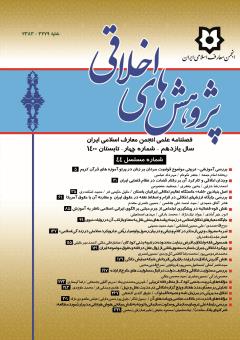مؤلفههای قدرت در خلافت عباسی و پیامد های آن
محورهای موضوعی : Challenge of Ethicsرسول اخگر 1 , جلیل پورحسن دارابی 2 , عباس عاشوری نژاد 3
1 - داراب
2 - داراب
3 - داراب
کلید واژه: خلافت عباسی, ساختار قدرت, ایران, آل بویه, تحولات سیاسی, اجتماعی و فرهنگی, سلجوقیان.,
چکیده مقاله :
مقاله حاضر به بررسی مولفه های ساختار قدرت در خلافت عباسی پرداخته و نتایج و تاثیرگذاری این مولفه ها را در قدرتمندی و ضعف خلفا عباسی و همچنین تحولات سیاسی و اجتماعی خلافت عباسی مورد بررسی قرار میدهد. با روی کار آمدن عباسیان در سال ۱۳۲ هجری و ورود عناصر قومی جدید در تشکیلات سیاسی، اجتماعی و اداری عباسیان و همچنین گسترش قلمروخلافت، تحولات و دگرگونی های بنیادی که عمدتاً متاثر از نفوذ اقوام و فرهنگ های مختلف بود، در جنبه های مختلف سیاسی، اجتماعی، فکری و فرهنگی رخ داد و یکی از این تغییرات، دگرگون شدن ساختار قدرت خلافت عباسی بود که برخلاف دورههای قبل نمی توانست ثابت بماند. اتخاذ سیاست شرق گرایی از سوی عباسیان که با نفوذ و تاثیرگذاری عناصر قومی و طبقات اجتماعی جدید همراه بود و همچنین شکلگیری مسائلی مانند ایجاد حکومت آل بویه و سلجوقیان و تحولات فرهنگی و تاثیرگذاری منابع و مراکز فرهنگی و اندیشه های جدید و بهرهگیری عباسیان از ابزارهای مذهبی مانند انتساب به پیامبر (ص)، بهره گیری از تفکر مهدویت، ادعای خلیفه الهی و حقانیت الهی حکومت و خلافت جهت کسب مشروعیت و از سوی دیگر پذیرش امارت استیلا در زمان ضعف، راه را برای ایجاد تغییرات و تحولات بنیادین در جنبههای مختلف خلافت عباسی مانند ساختار قدرت سیاسی مهیا و فراهم نمود. نتیجه این که تغییرات ایجاد شده و همچنین تاثیرگذاری این مولفهها از یکسو باعث تداوم خلافت عباسیان به مدت بیش از پنج قرن گردید و از سوی دیگر، به دلیل سهیم شدن و مشارکت عناصر قومی جدید در قدرت راه را برای شکل گیری حکومتهای مقتدر شیعی و سنی که بخشی از مشروعیت خود را از دستگاه خلافت کسب میکردند، فراهم آورد.
This article is dedicated to studying about components of power in The Abbasi's caliphate and Also the outcome and the effect of these components on their strengths and weaknesses. It is also about their political and social developments. Right after Abbasi's caliphate started in year 132 hijri and the arrival of new ethnic elements in political, social and official organization, and also expanding the territory of the caliphate, fundamental changes and transformations which were mostly caused by the influence of different ethnicities and cultures, started to happen is political, social , intellectual and cultural aspects. One of these changes was the transformation of the Abbasi's power structure which started to make their territory unstable unlike the previous ones. Adoption of orientalists policy by the Abbasi's which was joined by the influence of new ethnic elements and social classes and also the formation of issues like the establish of Al-buway and Seljuk government and cultural developments and the influence of cultural resources and center and new ideas and also Abbasi's using religious tools such as attribution to prophet, benefiting from mahdism thinking, claiming the divine caliph and the divine legitimacy of the government and the caliphate to gain legitimacy and on the other hand, accepting the emirate of domination in times of weakness, all made the path for the fundamental changes in various aspects of the Abbasi's Caliphate such as the structure of political power. As a result of these changes and also the effect of these components, The Abbasi's ruled for more than five centuries and on the other hand, due to the sharing and participation of new ethnic elements in power, the path to form powerful shia and sunni governments was provided which they gained part of their legitimacy from the caliphate.
